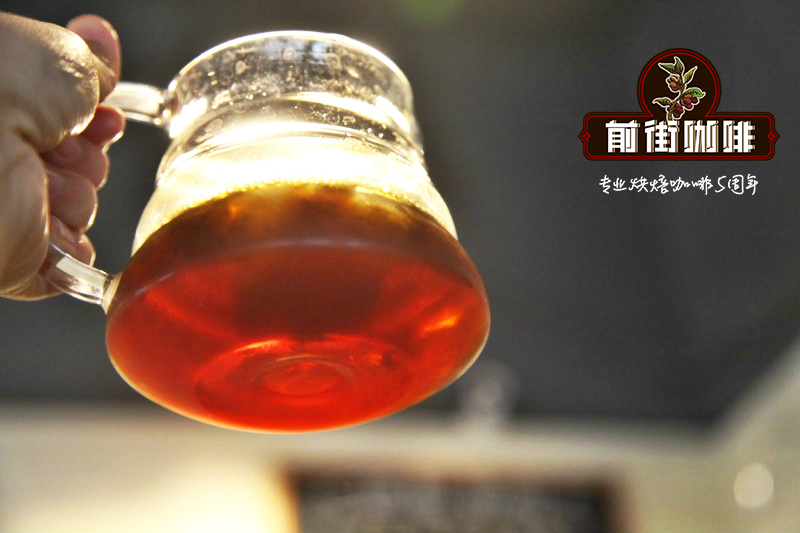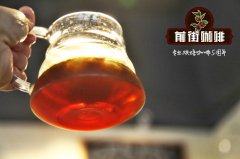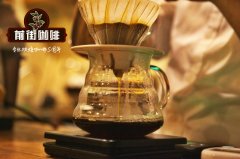Hawaiian Kona Coffee Rural / Farm cultivation status Analysis of Hawaiian Coffee Bean varieties

Professional coffee knowledge exchange more coffee bean information please follow the coffee workshop (Wechat official account cafe_style)
Visitors to the Kona district of Hawaii have the opportunity to taste the world-famous Kona coffee. Many people think that this gourmet coffee can even make connoisseurs covet!
Kona's mountain road is narrow and circuitous, with coffee trees on both sides of the hillside. The coffee leaves are bright and pleasing to the eye, and the coffee flowers are small and white. In the blooming season of the year, the fragrance of the flowers can be heard everywhere, and the flowers lag behind to produce small coffee fruits.
There are more than 600 coffee gardens here, large and small, built adjacent to each other, all of which are family businesses and handed down from generation to generation! The coffee-growing area on the island of Hawaii is quite vast, about 1.5 kilometers wide and 50 kilometers long, located on the slopes of the two ancient volcanoes, Hua Lalai and Mauna Loa. In the mountains with an elevation of 150 to 750 meters above sea level, it is most suitable to grow coffee.
Kona coffee is a Hawaiian specialty, whether in famous resorts, supermarkets, country shops, or roadside cafes, there is always a fascinating smell of coffee. People who know how to drink coffee like it full-bodied and refreshing, with a smooth entrance and fragrant teeth and cheeks. How did the coffee industry build up and grow into a multimillion-dollar enterprise in this former monarchy?
It is generally believed that Marlin was the first person to introduce coffee to Hawaii. Marlin was a doctor and an assistant to King Kamihamiha I. It is said that he introduced coffee trees to Oahu in 1813 and began to grow them on the island. Around 1828, the branches of the coffee tree were brought from Oahu to the Kona district of Hawaii. Those coffee trees belong to Arabica (Arabica), and Kona still produces this kind of coffee. By the 1830s, Kona's coffee had grown so luxuriantly that it could be put on the commercial market.
Why is coffee so luxuriant in Kona
Although from the botanical point of view, coffee is an evergreen shrub or small tree, but coffee (1) can be up to 10 meters high, no wonder many people call it a coffee tree. Kona's geographical environment is the most suitable for growing coffee, because the trade wind blowing from the east of the island, blocked by Mauna Loa volcano, climbed up the mountain to 4000 meters, when the wind became much softer. A gentle trade wind crosses the volcano to Kona and gently blows the coffee trees so that even the delicate coffee flowers will not be hurt.
The hillsides of Kona are sunny, but there are often clouds in the afternoon to protect plants from the sun. The clouds will also sprinkle a continuous drizzle to moisturize the coffee trees. The climate here is mild all the year round, and the plants are not in danger of frosting.
Harvesting and processing
How long will it take to plant coffee trees before they can be harvested and sent to the market for sale? Generally speaking, coffee trees need to be planted for at least three years before they can bear satisfactory fruit. Coffee trees blossom several times a year, so reapers pick fruit eight times a year.
The coffee fruit is ruddy and plump. There are usually two seeds hidden in the fruit, and the seeds are coffee beans. Coffee beans are covered with a thin skin, so remove the pulp and peel first (2), then soak the peeled beans in water (3), and then dry them (4). The number of processed coffee beans is much less than that before processing. Depending on the quality of the finished product, eight sacks of coffee fruit may produce only one sack of roasted coffee beans.
Roasting (5) coffee beans can be said to be an art in itself. in addition to excellent equipment, the baker's skills are also very important. How long coffee beans are roasted mainly depends on the following factors: moisture, weight, grade, quality, required color and weather conditions at that time.
Most of the coffee gardens and mills on the island of Hawaii use modern sales techniques. They welcome the public to visit, visit the production process and taste Kona coffee. Colorful road signs, distinctive old coffee mills, antique cafes and hotels can be seen everywhere. Of course they all sell Kona coffee!
Coffee was once carried by tame donkeys. Because the donkeys were so harsh, the locals jokingly called them "Kona Nightingale". They were later replaced by military jeeps, but both vehicles were eventually eliminated. Donkeys are released back to nature and become protected animals, while the jeeps are placed in the farmers' back gardens and slowly eroded by rust!
March into the high-end market
Over the years, Kona coffee has been mostly mixed with second-class coffee and sold on the market. Until the mid-1950s, things were different. At that time, the global price of coffee rose, while Kona produced a considerable amount of coffee. The affiliated school of the University of Hawaii met with farmers to encourage them to grow more coffee. Farmers, producers, researchers and affiliated school staff exchange information about growing coffee.
The subsequent results are satisfactory. Since 1970, Kona coffee has gradually ceased to be mixed with inferior coffee. Kona Coffee has been transformed into a premium drink in the beverage market, not only for domestic demand in the United States, but also for sale in the international market. The price of Kona coffee is getting higher and higher in the market. International trade treaties help stabilize the price of coffee and prevent price fluctuations, which is good for coffee farmers. In addition, "Kona Coffee" is registered as a patented brand and protected by copyright law, which also contributes to marketing. At present, many coffee farmers are selling coffee online, which is very profitable.
Kona Coffee Festival
Now there is Kona Coffee Culture Festival held every year, the scale is grand, everyone is welcome to participate. Programs include recipe design competitions, golf competitions and many other events. Of course, the focus of the coffee festival is the coffee product evaluation contest, where experts taste coffee from different plantations. The competition is fierce because coffee sales in the winning plantations will be greatly increased.
How to make the perfect Kona Coffee? The conference provided the following suggestions: "Distillation machine plus filter paper is the best modulation method." Pour the fresh cold water from the faucet into the machine and add 3 teaspoons of Kona coffee for every 178 milliliters of water. If you want to keep the coffee warm and drink it within an hour, the coffee will have the strongest flavor. "
Now would you like to try some Kona coffee? In this way, you will taste what many people think is the strongest coffee in the world. Kona Coffee-is really the best in the eyes of tasters!
Qianjie coffee: Guangzhou bakery, the store is small but a variety of beans, you can find a variety of unknown beans, but also provide online store services. Https://shop104210103.taobao.com
Important Notice :
前街咖啡 FrontStreet Coffee has moved to new addredd:
FrontStreet Coffee Address: 315,Donghua East Road,GuangZhou
Tel:020 38364473
- Prev

Hawaiian Kona coffee price expensive reasons Hawaiian Kona coffee how to bubble how to drink?
Professional coffee knowledge exchange More coffee bean information Please pay attention to coffee workshop (Weixin Official Accounts cafe_style) Why is Kona coffee so expensive? Straddling the latitude 19 to 22 degrees south of the Tropic of Cancer, the Hawaii Islands, buffeted by trade winds, are a natural and perfect coffee-growing area. Volcanic soil and tropical climate, complemented by light humidity, regular afternoons
- Next

What are the Hawaiian coffee farms? where is the Hawaiian Kona coffee? The expiration date of Hawaiian coffee?
Professional coffee knowledge exchange more information about coffee beans Please follow the coffee workshop (Wechat official account cafe_style) Hawaii (Hawaii) after nearly two centuries of efforts to grow coffee, the term Kona has almost been equated with quality. But historically, since coffee trees were first introduced to the island in 1825, they have also been able to grow coffee.
Related
- Does Rose Summer choose Blue, Green or Red? Detailed explanation of Rose Summer Coffee plots and Classification in Panamanian Jade Manor
- What is the difference between the origin, producing area, processing plant, cooperative and manor of coffee beans?
- How fine does the espresso powder fit? how to grind the espresso?
- Sca coffee roasting degree color card coffee roasting degree 8 roasting color values what do you mean?
- The practice of lattes: how to make lattes at home
- Introduction to Indonesian Fine Coffee beans-- Java Coffee producing area of Indonesian Arabica Coffee
- How much will the flavor of light and medium roasted rose summer be expressed? What baking level is rose summer suitable for?
- Introduction to the characteristics of washing, sun-drying or wet-planing coffee commonly used in Mantenin, Indonesia
- Price characteristics of Arabica Coffee Bean Starbucks introduction to Manning Coffee Bean Taste producing area Variety Manor
- What is the authentic Yega flavor? What are the flavor characteristics of the really excellent Yejasuffi coffee beans?

